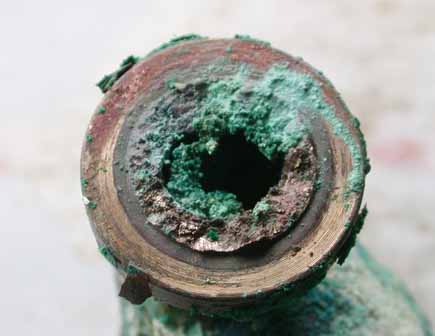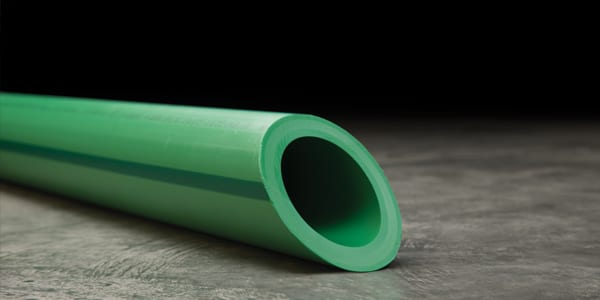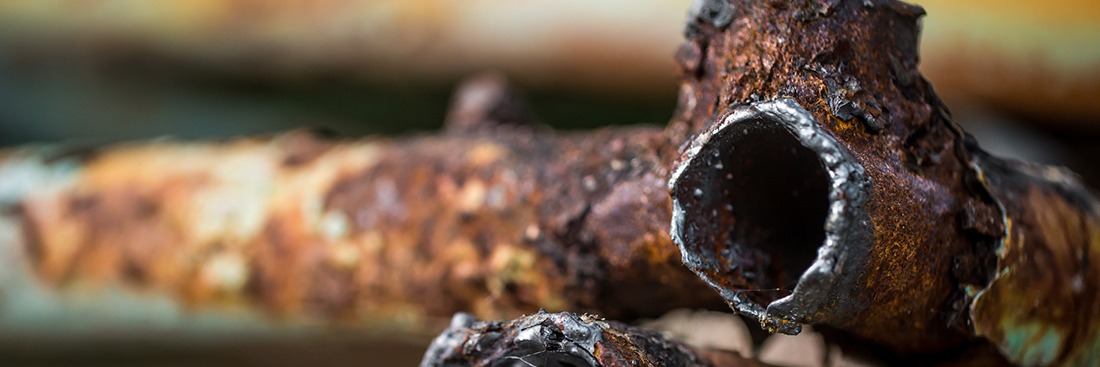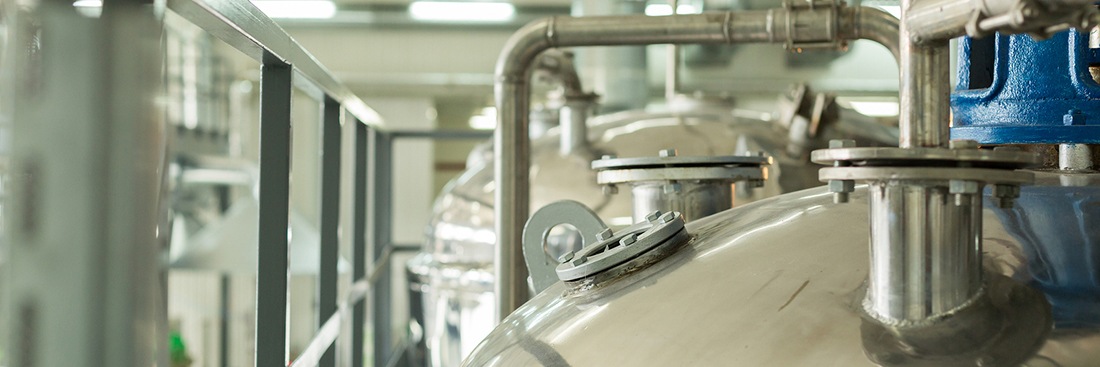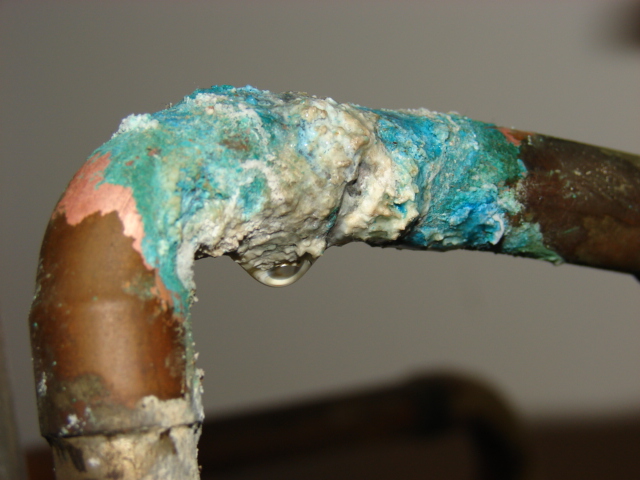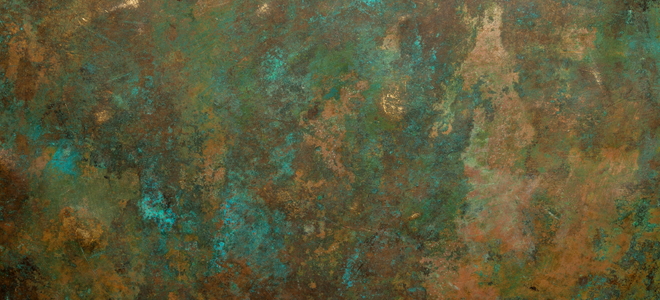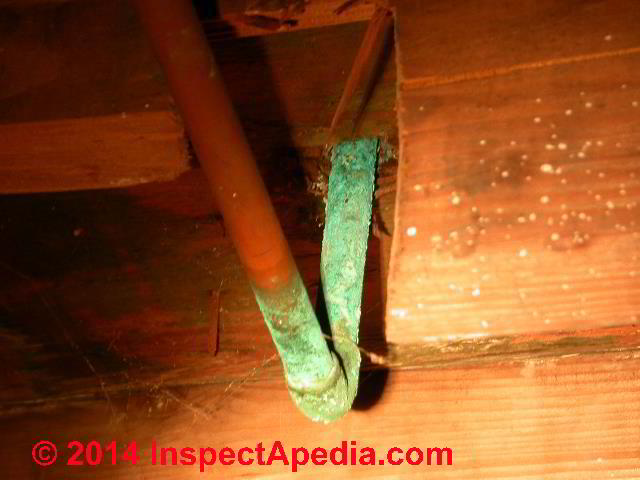Green Corrosion On Copper Pipes

If not taken care of your plumbing copper plumbing pipes can start turning green to bluish green on the outer surface.
Green corrosion on copper pipes. Despite the dismay that many people feel when they see that their beautiful copper pipes or copper cookware have turned green or black there is a comfort to be found. Be sure to change the water heater s anode rods every three to five years. The cause of this pitting is varied. You may also find tiny pinhole leaks in your pipes as the copper is slowly worn away.
Green can also point to a leak in pipe. On cold water piping pitting and corrosion is often caused by an excess amount of flux residue. Although copper is relatively unreactive it is not immune to caustic conditions. The latter is especially true if the water itself is staining other items like clothing sinks and fixtures.
Iron deposits from a rusty water heater can also corrode copper pipes. Spots of green appearing on your copper pipe is an indication of pinhole leaks. The copper pipe green corrosion is caused by the copper being dissolved out of the pipes and then deposited elsewhere. The excess flux gets carried through the pipe and deposited along the way pitting the interior.
Typically this green discoloration is a patina which develops from plumbers not cleaning away excess soldering flux after joining pipes. Water has seeped through small holes in the surface to react with the outside layer causing circles of patina. This bluish green layer is known as patina a chemical layer which is commonly formed on metals. A green moldy looking substance may develop on your copper water pipes especially at the joint.
One of the main symptoms of pipe corrosion is blue green stains on your sinks showers faucets drains and other plumbing fixtures. The sight of transformed pipes is commonly seen whenever pipes are made of copper.

